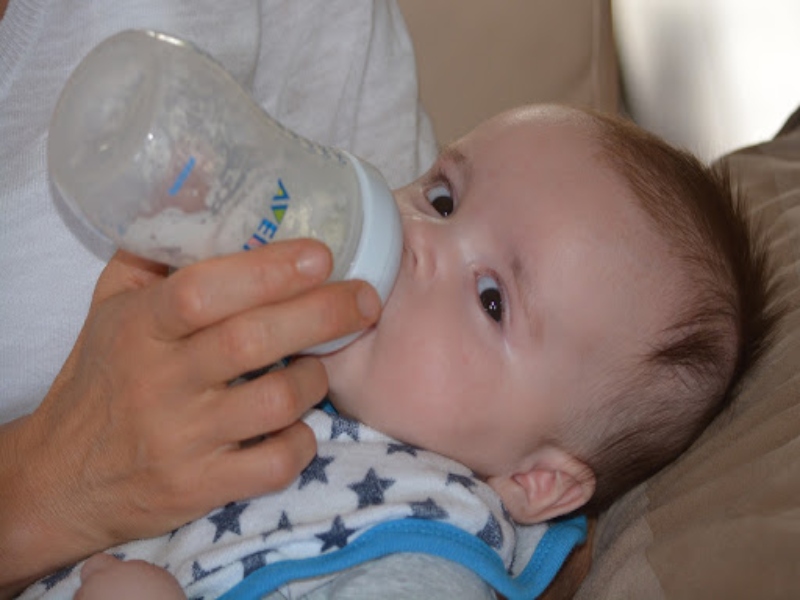Being a new mom can be both exciting and scary. There are many things that you must learn as you navigate through all the do’s and don’ts of parenthood. One of the first things that every mom takes on is breastfeeding. After all, breast milk is dubbed as the “superfood” for a reason.
However, every once in a while, you will be unable to breastfeed your baby. You might think that you will always be around 24/7, but eventually, reasons will appear. You may have to go back to work or perhaps your little one is unable to latch on properly. The good news is, you can use a breast pump to collect milk and store it for future meals. Because you can create a stash of milk, your baby will not have to skip this nutrient-filled food.
There are 2 types of breast pumps, electric and manual. Manual pumps are less expensive than their electric counterparts and are travel-friendly because they don’t need an outlet to work. Electric breast pumps, on the other hand, take no effort to use and are more efficient in expressing milk. But if you’re worried about portability, according to CuteLittleDarling.com, you can now find an electric breast pump that is rechargeable. What this means is you can also take your unit with you wherever without worrying for a power source.
When Can You Start Pumping?
Some moms immediately start pumping right after their baby is born. The reason for this is because pumping can help encourage their milk supply. If the child is born premature, his/her mom can start early on pumping as well.

However, do note that it is crucial that you have established breastfeeding first before bottle feeding. This usually happens around your baby’s 4 to 6 months of life, and after this, you can pump in between your feeding sessions. The back and forth expressing of milk in breastfeeding and pumping allows you to drain your breasts more efficiently and prevent engorgement.
If you have to leave for a long duration, you can start pumping 2 to 3 weeks beforehand to get more comfortable. Pumping this early also lets you collect enough milk for your baby.
When is the Best Time to Pump?
The short answer is during the day, or better yet, in the morning. Your breasts are going to be naturally fuller during this time, which can help you pump more efficiently. If you are interchangeably breastfeeding and pumping, you can do your session an hour after you breastfeed your baby in the morning. However, you can also pump during the evening if this is more convenient for you.
Some moms even use a manual pump type called a milk catcher. Pumping using a milk catcher is also called passive pumping because it only catches the milk from your breast as you breastfeed with the other. Passive pumping is an efficient way to avoid wasted milk and expand your stash.
Speaking of expanding your milk stockpile, pumping every 2 hours in-between breastfeeding can also help in increasing your milk supply. Milk production works in a supply and demand scheme, which means, to maintain your production level, you have to keep your demand.
If you’re not with your baby, you can pump at the same time with his/her breastfeeding session. This way, you can keep your milk supply level high. If you are replacing missed breastfeeding sessions, it is best that you pump every 3 or 4 hours similar to a baby’s milk demand.
How Long Should It Take Using the Pump?
The duration of each mom using a pump will vary individually. Some women only need 15 minutes to express the right amount of breast milk, while some take twice the time. Once you notice that your breasts feel drained and the milk flow is slowing down, you can stop your session.
As we have said earlier, you can pump every 3 or 4 hours. This takes a total of 8 to 10 times a day and usually gives you more than a thousand milliliters of milk. Pumping for this duration can boost your milk production and allows you to drain your breasts with milk efficiently.
How to Prepare for a Pumping Session
It is essential that you feel relaxed and comfortable before pumping. Some people even suggest thinking of your baby as it contributes to stimulating your body to produce milk.
You can also massage your breasts before (and during) pumping or put a warm compress on them to stimulate milk let-down. Besides these methods, check if you have the perfect flange size will make pumping more effective and comfortable.
How to Use a Breast Pump
Each model may have a specific direction unique to it, which is why it is best to read its manual first. However, some general things that you must know in using a breast pump involve the following:
- Check if you have the right flange size. You can also moisten the flange itself with water to create a good seal.
- Your nipple must be in the center of the flange before you start pumping.
- Start with a low suction level. Most pumps on the market mimic a baby’s suction rhythm, which involves 2 phases; stimulation and expression.
- After each use, make sure that you clean your pump. Closed system pumps are easier to clean because it has a barrier between the pump mechanism and the collected milk.
- Pay attention to the pump parts that are in contact with the milk and your breast. Clean and scrub them with hot water and liquid soap and then air dry. You should also check if the unit you have is dishwasher safe to save time.
How to Store Breast Milk
First, fill your milk bottles only three-quarters full. The reason for this allowance is because frozen milk can expand. You should also never freeze milk in large quantities as they will be difficult to thaw.

You can store freshly expressed milk for as long as 4 hours in room temperature. Keep in mind that they must be away from any sources of heat. If you put your milk in the fridge, its lifespan can last up to 4 days. But if you want a longer preservation period, you can opt to put your stash in the freezer for as long as 6 months. Pro tip: Label each milk bottle to keep track on which you should use first.




